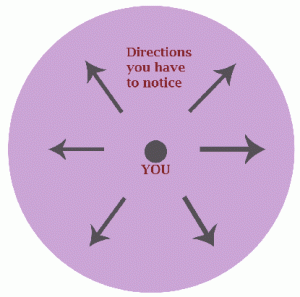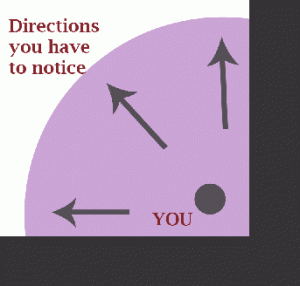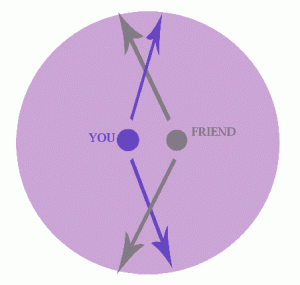I love this picture. It was taken at SHOT Show in Las Vegas, which is funny because the three of us actually live within 20 miles of each other in Washington state. But let me tell you why the picture is so special to me.
Every successful woman needs three other women in her life: she needs a mentor, a sister, and a coach. If she is lucky, she might find one friend who fills all of these roles. If she is blessed beyond measure, she might find two friends who each fill these roles for her in different ways. I am blessed beyond measure.
The woman to the left in the picture really started it all. Her name is Gila Hayes. She’s a famous gun writer, one of the best. Her book, Personal Defense for Women, provides excellent advice for staying safe and I highly recommend it. Along with her husband Marty, Gila runs two important ventures. One is the Armed Citizens Legal Defense Network, which provides legal information and assistance to people who defend themselves with deadly weapons. The other is the Firearms Academy of Seattle, where I learned to shoot.
Gila taught the first gun class I ever took, a defensive handgun class with about a dozen students in it. During that weekend, she claims, she “didn’t pay much attention” to me or my shooting, because there was another shooter on the line who needed extra help. That’s not what I remember. What I remember was that every time I needed a word of encouragement, she was at my shoulder, saying that word. Every time I needed a kick in the pants, she was there with boots on. And every time I was confused – which was a lot – she was there to untangle me and get me back on the straight and narrow. The shooting bug bit me that weekend, and it bit hard. I walked out of that class knowing two things: 1) I had learned a lot, and 2) I wasn’t done yet.
Because I’d been bitten so hard by the shooting bug, I was determined to take every class I could take. In this I was fortunate, because this school I’d wandered into by an accident of geography (it’s two miles from my front door) turned out to be one of the best and most affordable defensive firearms schools in the country. I didn’t know that at the time. I just knew it was this cool place and that the classes were – expensive. Very expensive, for a homeschool family with five kids that lived on one man’s salary. So I got creative. Over the next few years, I traded babysitting with friends and worked as an occasional carpenter’s flunky to earn money to buy classes for myself. I traded all sorts of odd jobs with friends, making these weird three-cornered barter deals so I could learn more. When I was finally up to speed enough not to be a danger to myself or others, I volunteered to do scutwork at the range during classes, hanging targets and hanging on the instructors’ every word. Eventually, I’d been hanging around long enough that Gila and Marty suggested I should become a member of the instructional staff. As an assistant instructor (I thought of myself as a very junior staff mascot), I worked through Marty’s instructor certification process. It took me two years and countless hours of practice, classes, and work to get there. And it was worth every minute.
But I was telling you about Gila. Very early in my learning process, I told Gila that I was lonely for other women and needed to hear more about other women’s experiences while they were learning to defend themselves. Men and women have very different cultural expectations around violent crime, and often have different defensive needs. Although the staff at FAS has always been extremely good with their female students, there were a lot of little tweaks I’d had to work out on my own. I wanted a place where I could learn a little more from other women. Was there a place like that? We talked about that, but at the time there really wasn’t. Two or three years later, around the time Marty invited me to come on board as an assistant instructor, Gila brought the subject back up. Would I be interested in helping lead a women’s program? Thus was born the Women’s Study Group at FAS, a program that lasted only a few years but had a lasting impact on my life.
The WSG met only occasionally, five or six times during the year. It was open only to female graduates of any class offered by FAS. The program was simple. We would usually meet in the classroom to discuss the day’s topic, then have lunch together before heading out to the range to shoot a supervised course of fire. Topics ranged from the ridiculous to the sublime, with plenty of laughter and learning along the way. We had holster shows, learned to shoot different types of guns, discussed and tested bullet penetration through various household items (Does a bookcase stop a bullet? Come and find out!). We took field trips to friends’ ranges and held mock-IDPA matches so members would feel confident when they attended the real thing. We shot in low light and with compromised vision. We shot in downed positions, such as you might use if you were knocked on your back by an attacker or if you tripped and fell while running from danger. Through all that, Gila welcomed my active participation in the planning stages and relied on me to help her run the programs smoothly. It is safe to say that if she hadn’t done that, I’d never have gotten the courage I needed to take the next step in pulling my own classes together.
She did something else, too. She persuaded me to start writing about my experiences with guns. At first it was a simple favor: would I be interested in writing gun reviews? She had an ongoing commitment to a magazine, but needed time for some other projects. Since I wanted to learn more about how to teach but had little money to buy guns for myself, this would give me an opportunity to get my hands on a lot of different guns for the wider experience an instructor should have. Grand idea! I jumped in with both feet. My first gun review appeared in Women & Guns magazine in 2004.
Waiting for the issue to arrive in the mail, I felt as if my every nerve was exposed and extended six inches or more from my actual body. It was an awful feeling. The article was terrible. Everyone was going to hate it, and me. I said as much to Gila. She calmed my nerves, reminded me that I did know what I was talking about, and said something else: “I’m proud of you.”
This is what a mentor looks like.
But we were talking about that picture. The other woman in the picture, the one in the center – that’s Diane Walls. Diane, too, is a famous gun writer. She doesn’t have a book out yet, but you can read her work in the pages of many different magazines. An accomplished martial artist, Diane came to FAS about a year and a half after I did. She was there at the first meeting of WSG. By the second year of that program, she was helping run WSG events alongside us.
Diane and her husband Tom have consistently pushed me to shoot better. They’ve been my most frequent range buddies, encouraging me to practice harder and more often. When we get together to shoot, they come with plans (“Today we’re all going to work on moving targets”) and they come prepared to work hard. Their example and encouragement – and yes, a little bit of sibling rivalry competition between us – have driven me to develop my shooting skills.
There’s something else. Diane’s experiences as a martial arts student and instructor several decades ago – a time when women just didn’t do martial arts – helped me understand the dynamics of how we were helping change the shooting world. Just by being out there, being who we are and doing what we do, we’ve helped change that culture for the better. That’s a good thing. Her experiences teaching martial arts also make her an excellent range assistant, which is why I feel so blessed that she’s agreed to travel with me to some of the classes I’ll be teaching this year.
Together, both of these women have become my mentors, my sisters, and my coaches. And they’re both going to kill me for writing this. But that is why I love this picture – and them.











